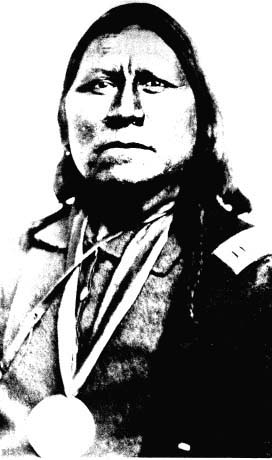From the book, Satanta, by Charles M. Robinson, III:
|
||||||||
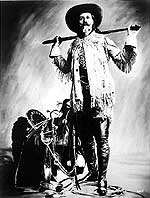 |
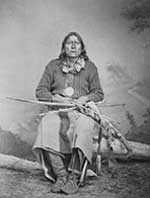 |
Buffalo Bill Cody |
Kiowa Chief Satanta |
The following excerpt is from the book, Buffalo Bill and Sitting Bull, by Bobby Bridger.
Roman Nose's death stunned the Cheyenne yet Tall Bull quickly assumed leadership of the Dog Soldiers and retreated to council. Meanwhile, as the Indian Wars erupted with the Cheyenne in Kansas, Cody had a dangerous encounter with Kiowa Chief Satanta which reveals the scout's shrewdness as well as his luck. After escorting General Hazen the thirty miles between Fort Larned and Fort Zarah, Cody was returning to Fort Larned. About halfway between the forts Cody was "jumped" by forty Kiowas—men he had seen at Fort Larned earlier that day—men who had suddenly painted their faces for war. As the Kiowa rushed upon him with hands extended, however, Cody's immediate impulse was to shake hands with them, even though the war paint and rowdy manner of the Indians clearly indicated their intention was not friendly. An Indian grabbed Cody's hand and drew him and his mule in so close that he was quickly surrounded by the forty Kiowa warriors. The shouting Indians seized his guns and he was suddenly nearly knocked unconscious by a numbing blow from a tomahawk to his head. Just as quickly, the mob quirted their ponies and Will's mule into a run and headed out across the prairie.
The war party soon arrived at a large encampment and Cody immediately realized the Kiowa were no longer at peace; when he was presented before a group of chiefs, including Satanta, Cody figured he would soon be departing this realm....
...Eventually, after what seemed hours to Cody, Satanta addressed the scout, asking where he had been.
While Satanta and his warriors counciled, however, Will had time to structure a plan of action. Cody realized the Kiowas had been without meat for several weeks because of the delays ratifying the Medicine Lodge Treaty. He also knew the Kiowas had been promised cows and had been expecting a large herd of cattle for days. Cody told the Chief that he had been looking for the Kiowas' cattle herd.
This naturally piqued the old man's interest and he began to pepper Cody with a series of questions as to the whereabouts of the cows. Upon responding to the Chief, Cody led Satanta to believe General Hazen had sent him out ahead to tell the Kiowas that the cattle had finally arrived, and that a large body of soldiers accompanied the herd. The scout then saw his opportunity to divert Satanta's full attention from the ruse, and indignantly asked why Chief Satanta's warriors had treated him so disrespectfully. Knowing the incident would jeopardize his receiving the cattle, Satanta responded that his warriors were merely teasing and testing Cody's bravery as a joke. Aware Satanta was lying, Cody decided to use the ruse to his advantage and played up his rough, insulting treatment at the hands of the chief's warriors. The wily Kiowa chief figured with a large group of soldiers about to arrive momentarily it would be wise to release the scout and get the cattle peaceably.
Satanta soon freed Cody, admonishing him not to be angry with his treatment at the hands of the young warriors. When the chief obsequiously inquired if the scout needed assistance with the cattle, Cody convinced Satanta it would be best if he went alone to find the herd. Cody reasoned with the chief that the soldiers could then proceed to Fort Larned while he brought the cattle on to the Kiowa village by himself. The scout knew that he had laid out a pretty thin story and hoped to buy himself as much time as possible in order to make a run for it. To his amazement, Satanta agreed to let him leave alone, yet, as Cody suspected, a group of ten or fifteen warriors followed him and he knew the race would soon begin. Giving them a little slip, Cody put a bit more distance between the Kiowas and himself and spurred his mule into a run. The warriors promptly saw what Cody was up to and quirted into quick pursuit.
The race across the prairie was a good one. Even though Cody was mounted upon a fast mule, the Kiowas' swift ponies were steadily gaining on him; the leaders of the war party were soon less than a quarter of a mile behind!
As was the case throughout his entire life, luck rode alongside Will Cody. Fort Larned finally came into sight. The scout was even more relieved, however, to see soldiers approaching in a wagon. Cody galloped his mule up to the wagon and hurriedly announced there was a war party on his heels. The group quickly hid the wagon in the trees, took cover and waited for the Kiowa warriors to appear.
They did not have to wait long. The Kiowa war party raced into the clearing and were caught in a deadly ambush. The tables turned, the Indians whirled, scrambling for their lives. After scalping the two dead Kiowas, taking their weapons and catching their ponies, Cody and the soldiers headed to Fort Larned. Drummers and buglers, having heard the nearby gunshots, were calling troops to arms. All inside thought Satanta was attempting to capture the fort.
Frank Wharton described the horsemanship of the orcha war-painted Satanta when he attacked his wagon train on the Blanco River in 1866:
a splendid looking fellow… riding a small claybank stallion, often hanging on the opposite side of his horse and firing under the animal’s neck. When he sat upright he covered himself and crouched behind a rawhide shield which would ward off a bullet fired at long range…
The dexterity with which the Yellow Chief could manage his high-spirited horse, cover himself with his shield and fire at full tilt would have put the most skillful modern circus performer in the amateur class.
The teamsters were able to kill several Indian horses and wound several warriors. When Frank Wharton and wagon guard Johnnie Jenkins coordinated their shots, Wharton killed the Yellow Chief's horse and Jenkins shot the chief as he fell. Two other warriors scrambled off to safety when their horses were killed. Satanta gave "a loud blast" on his bugle, and the Indians withdrew to confer. Their losses were becoming too heavy, and they decided to retrieve the body of the Yellow Chief and withdraw.
Several warriors tried to get to the body but were driven back by heavy gunfire from the wagons. Finally Satanta called another conference, then changed horses for a small, fast pony and calmly rode down toward the wagons. Within the teamsters' gun range, he suddenly spurred the pony toward the Yellow Chief's body. Unable to swing down along the side of the pony away from the teamsters because the Yellow Chief's dead mount was in the way, he had to swing down on the side facing the wagons with his fully body exposed to the teamsters' rifles. The whites watched in fascination; only one fired and his bullet went wild. Satanta was able to grab the Yellow Chief's arm and swing the body up across the pony in front of him, then ride back to the other Indians.
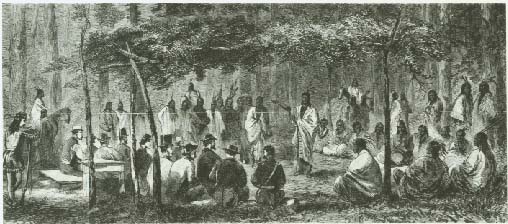
Medicine Lodge Treaty
But it was Satanta’s oratory skills that made him most valuable to the Kiowa’s and their Comanche allies. The following are parts of the speech given at the Medicine Lodge Treaty Council in 1868. It was once required reading in American high schools.
“All the land south of the Arkansas belongs to the Kiowas and Comanches, and I don’t want to give away any of it. I love the land and the buffalo, and will not part with it. I want you to understand well what I say.… I want you to understand, also, that the Kiowas and Comanches don’t want to fight, and have not been fighting since we made the [Little Arkansas] treaty. I hear a good deal of talk from these gentlemen [commissioners], but they never do what they say. I don’t want any of these Medicine lodges [ie., schools and churches] built in this country. I want the papooses brought up exactly as I am. When I make peace there is no end of it.…”
“I have heard that you intend to set apart a reservation near the mountains. I don’t want to settle; I love to roam over the prairie; I feel free and happy; but when we settle down we get pale and die.… I have told you the truth. I have no little lies about me; but I don’t know how it is with the Commissioners. Are they as clear as I am? A long time ago this land belonged to our fathers; but when I go up to the [Arkansas} river I see camps of soldiers on its banks. These soldiers cut down my timber, they kill my buffalo; and when I see that my heart feels like bursting; I feel sorry.”
Satank was present for the entire council but he hadn’t spoke and was not impressive looking. Percival G. Lowe recalled:
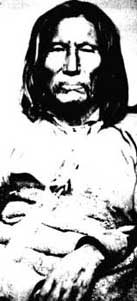
Satank
“He was a man about five feet ten, sparely made, muscular, cat-like in his movements-more Spanish than Indian in his appearance-sharp features, thin lips, keen, restless eyes, thin mustache and scattering chin whiskers that seemed to have stopped growing when one to three inches long.”
Captain Richard T. Jacob, described Satank as:
“a small man and decidedly insignificant but he was generally regarded as a man of superior ability. In appearance, he might have been mixed-blood or of Mexican descent.”
What they didn’t realize was the black sash wrapped around the shoulder and waist indicated he was the senior member of the most honored warrior society called the Ten Bravest. The other nine wore red sashes but all were required to anchor the sash to the ground with an arrow when a particularly difficult battle ensued. He would neither defend himself nor would be leave but stand his ground until his warriors were victorious or one removed the arrow as they passed him in retreat. That day, he spoke after Satanta.
“It has made me very glad to meet you, who are the commissioners sent by the Great Father to see us. You have heard much talk by our chiefs, and no doubt are tired of it. Many of them have put themselves forward and filled you with their sayings. I have kept back and said nothing-not that I did not consider myself the principal chief of the Kiowa Nation, but others younger than I desired to talk, and I left it to them.
“Before leaving, however, as I now intend to go, I come to say that the Kiowas and Camaches [sic] have made with you a peace, and they intend to keep it. If it brings prosperity to us, we of course will like it the better. If it brings prosperity or adversity, we will not abandon it. It is our contract, and it shall stand.”
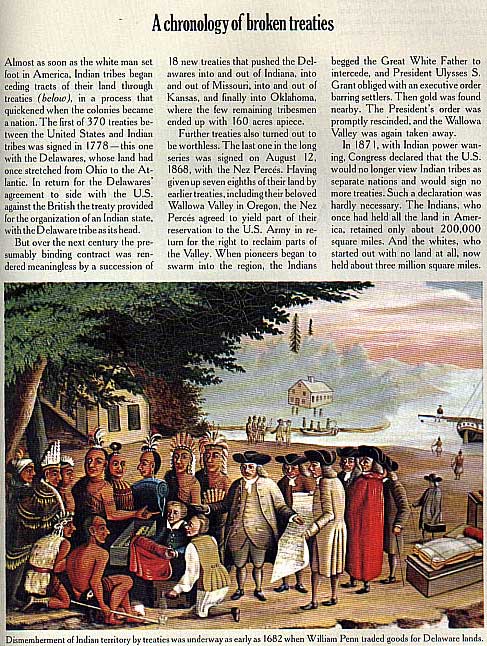
From the book, The Old West, The Indians, by Benjamin
Capps
In 1865, Satank had been promised the Texas Panhandle and given a silver medal. Apparently the Union army was a little concerned about their former enemies in Texas and now they wanted the Kiowas to promise to stop raiding Texas and Mexico.
“Our people once carried war against Texas. We thought the Great Father would not be offended for the Texans had gone out from among his people, and became his enemies. You now tell us that they have made peace and returned to the great family. The Kiowas and Camanches [sic] will seek no bloody trail in their land. They have pledged their word and that word shall last, unless the whites break their contract and invite the horrors of war. We do not break treaties. We make but few contracts, and them we remember well. The whites make so many that they are liable to forget them. The white chief seems not able to govern his braves. The Great Father seems powerless in the face of his children. He sometimes becomes angry when he sees the wrongs of his people committed on the red man, and his voice becomes loud as the roaring winds. But like the wind it soon dies away and leaves the sullen calm of unheeded oppression. We hope now that a better time has come. If all would talk and then do as you have done the sun of peace would shine forever. We have warred against the white man, but never because it gave us pleasure. Before the day of oppression came, no white man came to our villages and went away hungry. It gave us more joy to share with them than it gave him to partake of our hospitality. In the far-distant past there was no suspicion among us. The world seemed large enough for both the red and the white man. Its broad plains seem now to contract, and the white man grows jealous of his red brother.
“The white man once came to trade; he now comes as a soldier. He once put his trust in our friendship and wanted no shield but our fidelity. But now he builds forts and plants big guns on their walls. He once gave us arms and powder and ball, and bade us to hunt the game. We then loved him for his confidence; he now suspects our plighted faith and drives us to be his enemies; he now covers his face with the cloud of jealousy and anger, and tells us to begone, as an offended master speaks to his dog.
“Look at this medal I wear. By wearing this I have been made poor. Formerly, I was rich in horses and lodges-to-day I am the poorest of all. When you put this silver medal on my neck you made me poor.
“We thank the Great Spirit that all these wrongs are now to cease and the old day of peace and friendship [is] to come again.
“You came as friends. You talked as friend. You have partially heard our many complaints. To you they may have seemed trifling. To us they are everything.
“You have not tried, as many have done, to make a new bargain merely to get the advantage.
“You have not asked to make our annuities smaller, but unasked you have made them larger.
“You have not withdrawn a single gift, but you have voluntarily provided more guarantees for our education and comfort.
“When we saw these things done, we then said among ourselves, these are the men of the past. We at once gave you our hearts. You now have them. You know what is best for us. Do for us what is best. Teach us the road to travel, and we will not depart from it forever.
“For your sakes the green grass shall no more be stained with the red blood of the pale-faces. Your people shall again be our people, and peace shall be between us forever. If wrong comes, we shall look to you for right and justice.
“We know you will not forsake us, and tell your people also to act as you have done, to be as you have been.
“I am old, but still am chief. I shall have soon to go the way of my fathers, but those who come after me will remember this day. It is now treasured up by the old, and will be carried by them to the grave, and then handed down to be kept as a sacred tradition by their children and their children’s children. And now the time has come that I must go. Good-bye!
“You may never see me more, but remember Satank as the white man’s friend.”
The old man moved down the line of whites shaking hands with each. Then he mounted his pony and rode away.
The audience was impressed. Stanley called it a “gem” of a speech saying, “There is a good deal of truth in it which strikes home.” Actually there was very little truth on either side. The Kiowas and certainly the Comanches had no intentions of discontinuing the raids into the land of their enemies. Too much blood had been spilt to make peace and there was too much profit to be made in the raiding.
All indented paragraphs are from the book, Satanta, by Charles M. Robinson, III.
Kiowas
Army Returns
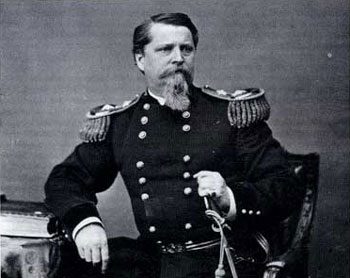
Maj. Gen. Winfield Scott Hancock. Photo from the book,
Encyclopedia of American Indian Wars, by Jerry Keenan.
The army still needed time to reorganize and a new treaty was needed to correct flaws in previous agreements. Therefore, they called another council in 1868 at Medicine Lodge. General Sherman replaced Hancock with Sheridan, who at first meeting developed such a low opinion of the Kiowas that he refused to take part in further negotiations. Naturally the Kiowas continued to act as principal spokesmen through the remainder of the conference. Their eloquence, and in Satanta's case, physical appearance, brought them to the forefront of the nation's attention.
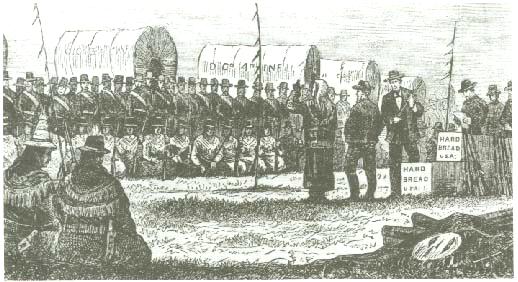
Satanta Lecturing Sheridan
Sir Henry Morton Stanley, of "Livingston I presume," rode with Sheridan's column as field correspondent and wrote admiringly about Satanta's appearance and capabilities as well as his intelligence. The chief already had a fearsome reputation on the frontier but was best known for carrying a captured bugle into battle and blowing contramanning orders, throwing the cavalry into chaos.
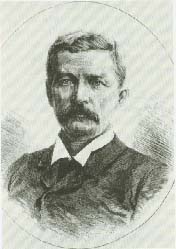
Sir Henry Morton Stanley
Post-war America was divided on the Indian issue. The reservations remained a sanctuary for captured wives, children, and livestock, and this situation naturally enflamed Texas tempers to the south. However, newspapers, magazines and dime novels were full of stories about the Wild West, and though most citizens favored western expansion, many felt sympathy for the Indian's plight. President Grant was even compelled to bar his army from the reservations, and he installed Quakers as agents.
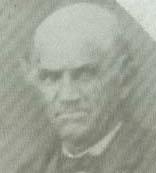
Lawrie Tatum
Brother Lawrie Tatum was assigned to the Wichita agency. Soon after his arrival, a handful of Kiowas burst into his office and held their weapons on him. Satanta put his hand on the agent's heart to see if he was afraid. He proved brave but completely ineffective at controlling the Plains tribes.
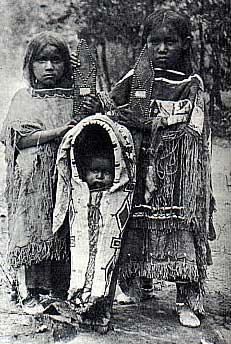
Post Civil War Frontier
Complaints of Indian depredations across the plains poured into army headquarters, and Sheridan ordered Colonel George Armstrong Custer to lead his troopers in search of raiders. In the winter of 1868, he had his only Indian victory at the Battle of the Washita where he attacked the same peaceful Cheyenne tribe victimized at Sand Creek. His Seventh Cavalry managed to kill a few dozen startled, half-awake Indians including Chief Black Kettle and his wife. Custer ordered retreat when his scouts reported thousands of Cheyenne, Arapaho and Kiowa lodges further upstream.

Colonel George Armstrong Custer
Soon after, Custer arrested Satanta and Lone Wolf, ignoring their white flag of truce and holding them in captivity for several months. Actually the ordeal doesn't seem to have been so unpleasant. Satanta charmed Custer, and the chief even had his son, Gray Goose, brought in to join them. Custer maintained amicable relations with the Kiowas long after the tribe's actions should have merited otherwise.
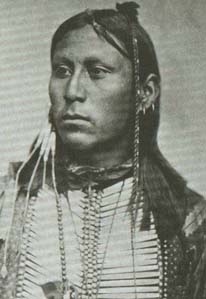
Gray Goose
Photo from the book, Carbine & Lance, The Story of Old Fort Sill, by Colonel W.S. Nye; Copyright © 1937 by the University of Oklahoma Press. Reprinted by permission. All rights reserved.
Medicine Lodge Treaty Reenactment Web Site
Home | Table of Contents | Forts | Road Trip Maps | Blood Trail Maps | Links | PX and Library | Contact Us | Mail Bag | Search | Intro | Upcoming Events | Reader's Road Trips Fort Tours Systems - Founded by Rick Steed |

